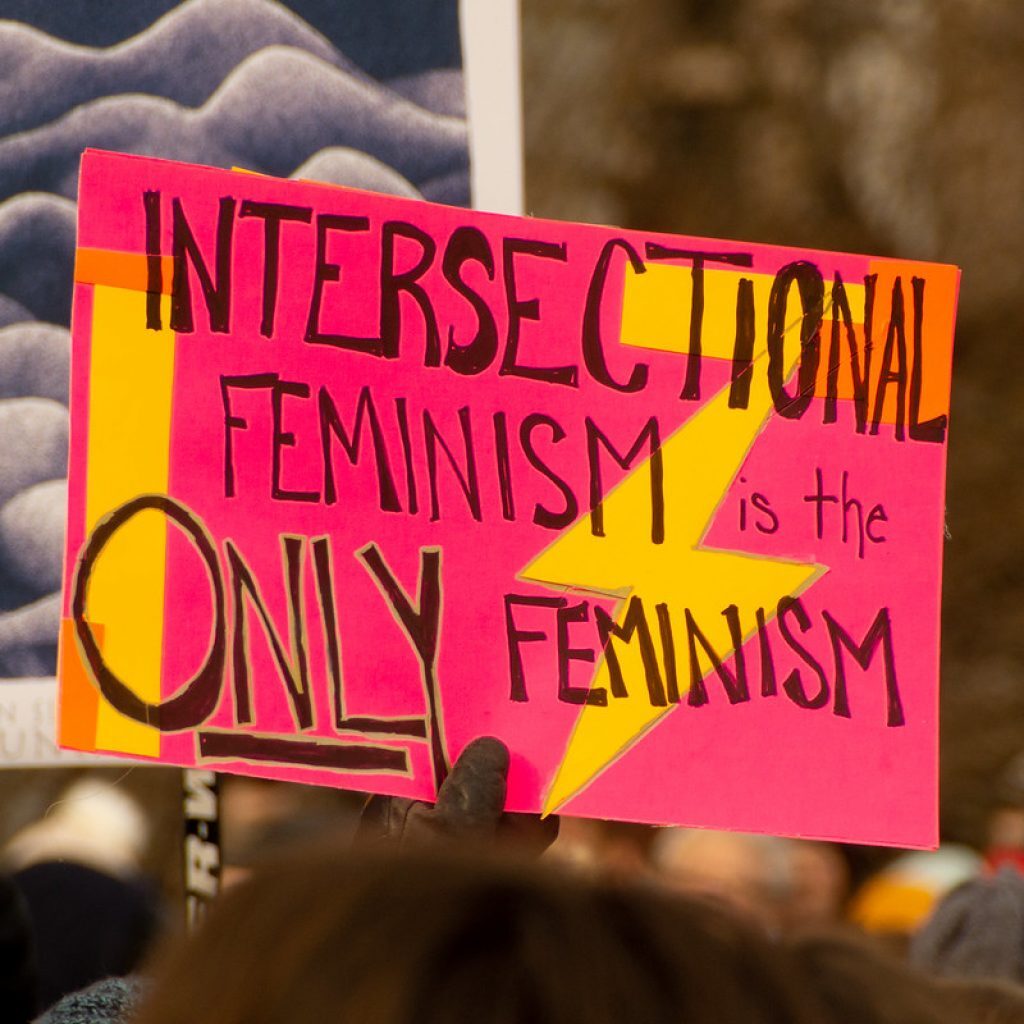March is Women’s History Month, bringing with it rallying cries from feminists everywhere. But feminism, alongside virtually every other social movement, is not one-dimensional: it means different things to different people. Although, problems arise when people fail to see this layered, multi-faceted reality because it discounts the unique experiences stemming from different identities. Enter intersectionality.
A term first coined by civil rights scholar Kimberlé Crenshaw in 1989, intersectionality takes a new approach to issues of race and gender. Although she originally intended for the use of the word to be in a legal context, in recent years, it has exploded into a buzzword. Republican Congressman Dan Crenshaw initially used the concept to illustrate the injustices Black women face as both Black and female, making their experiences different from white women and Black men (Vox).
Crenshaw was particularly interested in how the legal system and its refusal to see this complexity leaves Black women more vulnerable to injustices yet, paradoxically, excluded from aid. She defines her term as “A lens through which you can see where power comes and collides, where it locks and intersects. It is the acknowledgment that everyone has their own unique experiences of discrimination and privilege” (Crenshaw). It extends far beyond race and gender, as well. Intersectionality encompasses all forms of prejudice, such as sexuality, religion, and class, to analyze how they impact each other.
At its core, intersectionality is about respect. Simply respecting that people are impacted in various ways by systems of oppression also means recognizing your privilege, in a way. The discriminatory experiences of a working-class Latina woman are vastly different from the discriminatory experiences of an LGBTQIA+ Black woman or a female Islamic refugee who just arrived in America. But the point of intersectionality is not to use those differences as a reason to divide. Instead, intersectionality finds value in those differences and even sees them as a reason to unite against the oppressors.
But there are a ton of misconceptions about how intersectionality operates. Many people think intersectionality is doing more harm than good by finding new ways to put people in boxes, label them, and incite further divisions. Others believe that intersectionality encourages a ranking of victims in society, which fosters a way of looking at discrimination as a competition that you “win” if you can check off the most boxes of oppression. Its mission is not to start a witch-hunt for straight white men in some elaborate revenge plot. When these misconceptions become the mainstream narrative, misinformation gets spread. As a result, the people in power get defensive and roll their eyes at “woke” terms like intersectionality.
One of the most crucial aspects of intersectionality is solidarity and allyship, meaning that the people who hold power need to understand that they are in a better position than most and should allow others to have the spotlight. As renowned author and activist Mikki Kendall points out in her essay collection Hood Feminism: Notes from the Women that a Movement Forgot, “being a good ally is about opening the door for someone instead of insisting that your voice is the only one that matters.”
But unfortunately, the current state of mainstream feminism takes a trickle-down approach to the movement by believing that once white women are liberated from oppression, they can help other women achieve the same (Crenshaw). White feminists have seen considerable progress, but do they forget their duties in this trickle-down approach, or is it simply exclusion? Either option is problematic: the former encourages a white-savior complex, while the latter upholds discrimination like racism and transphobia. For centuries, white feminists have focused their attention beyond the broken glass shards to clear the path for others to do the same.
Often, feminism prioritizes a white women’s needs over other the needs of other women, leaving all other women feeling underrepresented by mainstream feminism. But understanding intersectionality allows us to step back and realize that all voices matter and deserve a platform. After all, feminism is about much more than reproductive rights, suffrage, and pay equity. Those are the worries of people who already have the privilege to be concerned about those things. Intersectionality recognizes that more fundamental rights like healthcare, housing, and food security also fall under the umbrella of feminism (Kendall). If anything is going to change, we need an intersectional framing of feminist issues backed by true solidarity and allyship. Intersectionality is not trying to create a new social hierarchy or flip the existing one on its head. The end goal is to eliminate social hierarchies.
I have tried my best to explain intersectionality, but I cannot encapsulate such a complex concept in a short article. For more information, I suggest turning to the experts and watching Dan Crenshaw’s 2016 TedTalk, “The Urgency of Intersectionality.” I hope it was as eye-opening for you as it was for me.

